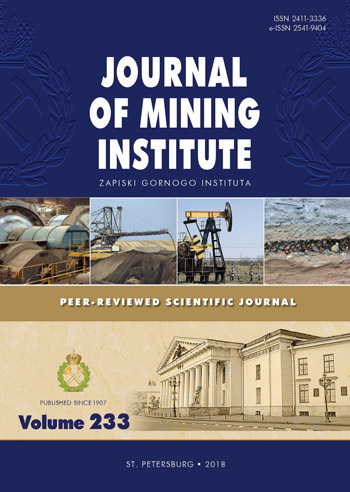Experience of Integrated use of gold-bearing raw material in the production of precious metals
- 1 — Senior lecturer Irkutsk National Research Technical University
- 2 — Ph.D., Dr.Sci. professor Irkutsk National Research Technical University
Abstract
With the depletion of rich gold-bearing ores, the processing started to use polymetallic ores, which, in addition to precious metals, contain other elements that could be valuable after recovery. The problem of using such ores is extremely difficult because of the high cost of recovery of associated valuable components. The paper presents the results of studies on the integrated use of extracted gold-bearing raw materials based on the example of the Berezitovoye deposit (Amurskaya oblast), they have low content of precious metals and many heavy non-ferrous metals (copper, lead). Experimental work was carried out to obtain copper by the method of cementation from solutions formed after the leaching of the impurities of gold-containing cathode deposits with hydrochloric acid. The cementing metal was iron turnings (waste products of the turning shop of the enterprise). Next, it was proposed to use cemented copper as a collector during re-melting of slags – wastes of processing of low-grade polymetallic ores containing precious metals. The authors obtained ingots of alloyed gold with gold weight fraction of 16 %, which meets the requirements of TU 117-2-7-75 on the content of non-ferrous metals. During hydrochloric acid treatment of cathodic deposits silver partially passed into the solution, it was recovered together with cemented copper and, in subsequent melting, passed into alloyed gold. Thus, the method proposed by the authors helps to reduce the content of precious metals in the «incomplete production cycle» of the gold recovery factory. The opportunity of selling the cementation copper at the enterprises specializing on manufacturing of jewels is shown; the expected economic effect at the same time amounted to more than 1.8 million rubles.
